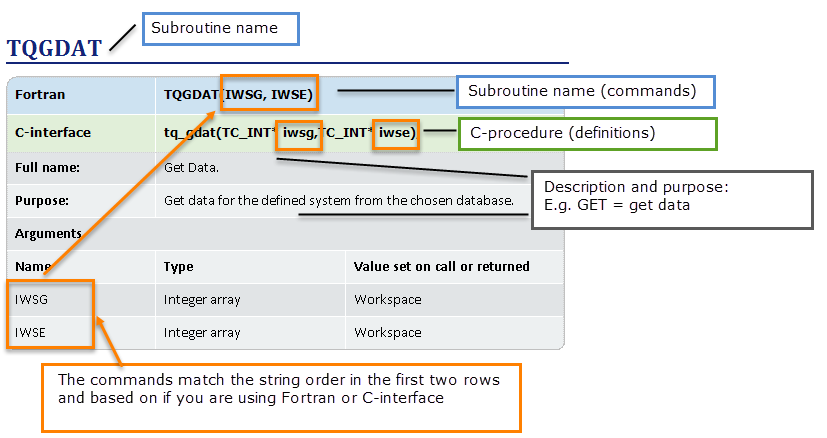TQSSV
| Fortran |
TQSSV(STAVAR, IP, IC, VALUE, IWSG, IWSE) |
|
|---|---|---|
| C-interface |
tq_ssv(TC_STRING stavar,TC_INT ip,TC_INT ic,TC_FLOAT value,TC_INT* iwsg,TC_INT* iwse); |
|
|
Full name: |
Set Start Variable. |
|
|
Purpose: |
To set start-value for a state variable. |
|
|
Comments: |
It is not necessary unless the calculation fails. |
|
|
Arguments |
||
|
Name |
Type |
Value set on call or returned |
|
STAVAR |
Character*8 |
Set as a state variable listed in Possible State Variables to Set Conditions in TQSETC |
|
IP |
Integer |
Set as a phase index (if needed). |
|
IC |
Integer |
Set as a component or constituent index (if needed). |
|
VALUE |
Double precision |
Set to the value. |
|
IWSG |
Integer array |
Workspace |
|
IWSE |
Integer array |
Workspace |
Note the following conventions to distinguish between the programming languages.
- Routines starting with TQXXX, for example, TQGDAT, are in the Fortran interface
- Routines starting with tq_xxxx, for example tq_gdat, are in the C-interface.
- In Fortran, all routines are subroutines and do not return any values except where explicitly declared as functions.
- All the C procedures are declared as void and do not return any values except where explicitly otherwise declared.
An example of how to read the subroutine definitions.
